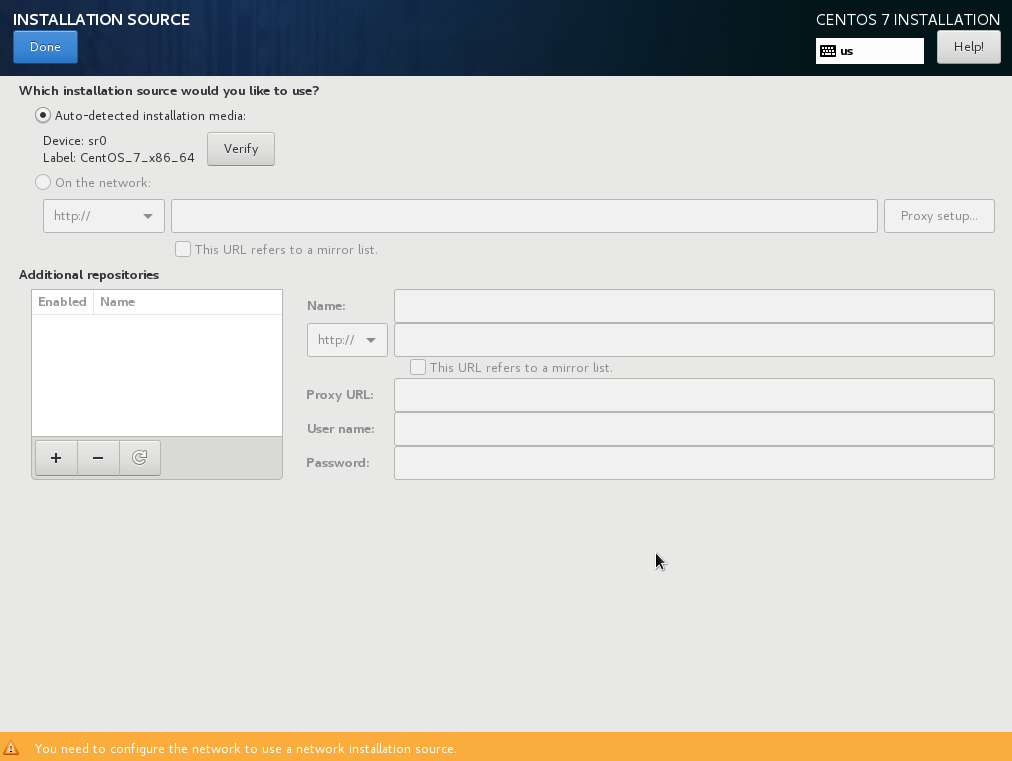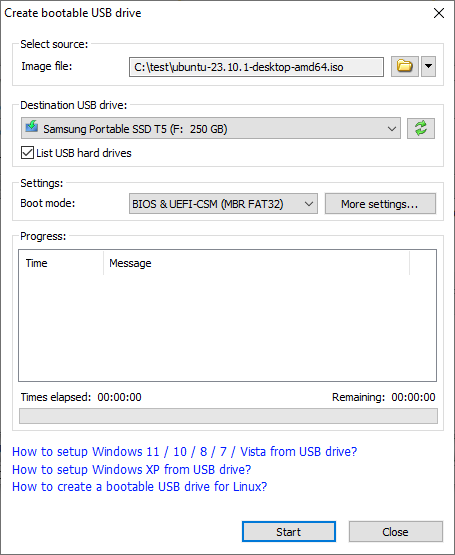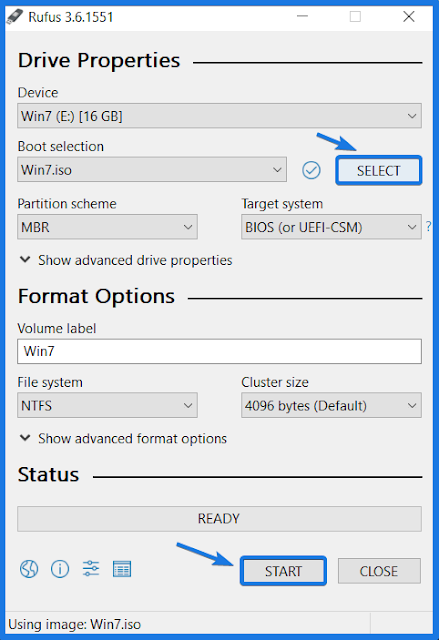

- MAKE A BOOTABLE USB FROM ISO CENTOS 7 INSTALLATION INSTALL
- MAKE A BOOTABLE USB FROM ISO CENTOS 7 INSTALLATION DOWNLOAD
If you are starting with a Red Hat system you will need to install the EPEL repository as well as the ‘livecd-tools’ as mentioned in the previous two paragraphs. To install the EPEL repository you run the command ‘sudo yum install -y ’.Īfter the EPEL repository has been added you will need to install the needed tool with the command ‘sudo yum install -y livecd-tools’.

Right-click on RPM and select ‘Open in terminal’. Once you are connected to the Internet if possible, open the RPM partition in a terminal.Īn icon for RPM should appear on the desktop. Once the desktop appears you may need to configure the Network Connection if you use Wi-Fi (the Wi-Fi password). Every time you boot from this USB Stick you will be asked the same setup questions. Once CentOS 7 is loaded you will be asked questions, such as language, to set up CentOS. Once the menu is shown from Unetbootin select to ‘Start CentOS 7’. You may have to press a key, such as F12, during the BIOS screen to boot from the USB Stick (your system may differ). Once the USB Stick imaging is completed boot from the USB Stick. NOTE: All files on the selected partition will be erased.

Once all is set, then click on the ‘OK’ button. If the stick is not found by Unetbootin, then make sure it is formatted as FAT32. If the USB stick was found at ‘sdc1’ then the ‘Drive:’ would be ‘/dev/sdc1’. Set the ‘Drive:’ to the location you noted when running the ‘lsblk’ command. Start Unetbootin and select to use a ‘Diskimage’ for an ‘ISO’ and select the location of where the ‘CentOS-7-x86_64-LiveGNOME-1804.iso’ file is located (unless you are using a different image). Look for the one labeled ‘CentOS’ and remember the ‘Name’, such as ‘sdc1’. In a terminal use the command ‘lsblk’ to list the drives. Copy the two downloaded files to the ‘RPM’ partition. The first partition will be the CentOS boot and the second partition is for the two files we downloaded in the previous step. The first partition is labeled as ‘CentOS’ and the second is ‘RPM’, to make things easy. The 8 GB stick is formatted as two - 4 GB partitions. The second USB Stick is for the Persistence installation. I am using an 8 GB thumb drive for my installation media. To start, the first USB Stick should be formatted as 2 partitions using FAT32. sudo add-apt-repository ppa:gezakovacs/ppa.If you do not have it installed then you can perform the following commands in a terminal to install it: On your system you will be using to setup the USB Stick you will need to have the program Unetbootin. This step will require a second USB Stick to boot from CentOS, in this case, to perform the necessary steps. If you are installing from a distro other than Red Hat then this step is necessary since an image with persistence can easily be done with a Red Hat system.
MAKE A BOOTABLE USB FROM ISO CENTOS 7 INSTALLATION DOWNLOAD
If you would prefer to use Fedora or another distro then simply download the file you need. The first file is CentOS 7 for a 64-bit system. To install a Red Hat distro you will need the following files: If you are running a Red Hat system already, such as CentOS or Fedora, then you need to perform step 3 and skip step 2. If you have an Ubuntu system then you need to perform steps 2 and 3 as well. There are three basic steps for this tutorial and they are:Įveryone will have to start at Step 1. These two articles are mainly for Ubuntu systems, but this article will cover the creation of a Red Hat bootable USB Stick with Persistence. To get around the issue of not saving changes there is the option of Persistence (for more on persistence, see the articles: Creating a Fix Stick and Fix Stick Upgrade). The problem with the bootable USB drive is that changes made to the Linux distro would not be saved. If space is not too major an issue for a distro then having a bootable thumb drive would be a perfect solution. Other people may have their own reasons for using other distros. I like to use the other distros to test programs and installation requirements, but I do not use the other distros on a common basis. The main distro installed would be the primary one used and the others would be used temporarily.

The problem for most people wanting to install multiple distros is that it would require major partitioning of their hard drive leaving little space for each distro. Many people like to have multiple Linux distros available to use.


 0 kommentar(er)
0 kommentar(er)
